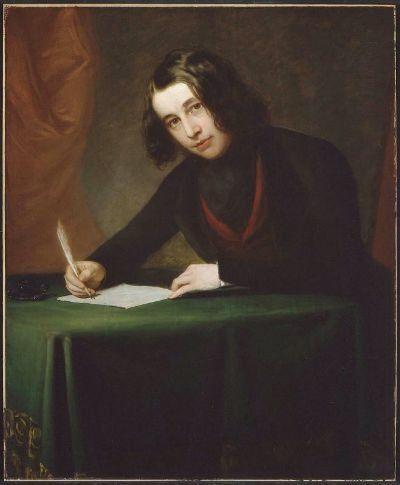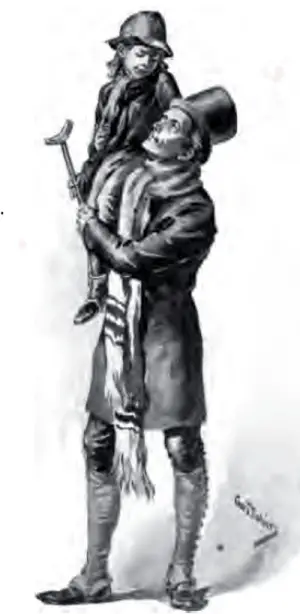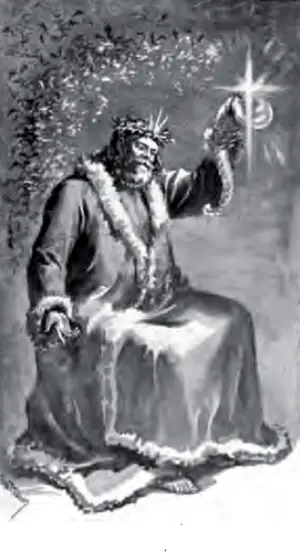
LAKEPORT – One of the world's great Christmas stories will be offered in a special Saturday production at Lakeport's Soper-Reese Community Theater.
Charles Dickens' “A Christmas Carol” will be performed at the Soper-Reese and also broadcast live on Lake County Community Radio, 88.1 FM beginning at 5:30 p.m. Saturday, Dec. 20.
The theater, located at 275 S. Main. St. in Lakeport, welcomes people to attend the performance for free.
The performance, based on Tony Palermo's radio adaptation of the story, will have a cast of 12 directed by Soper-Reese Artistic Director Bert Hutt. Before the production begins, the audience will be shown a demonstration on the sound effects' production and given background on radio dramas.
Dickens' story of redemption and love was published on Dec. 19, 1843, making it 165 years old this year.
“A Christmas Carol in Prose, Being a Ghost Story of Christmas” was written in only about two months, at the same time as he was working on his novel, “Martin Chuzzlewit.”
The 31-year-old Dickens sat down to write his “ghostly little book” in October of 1843 at his home at 9 Osnaburgh Terrace, London. By that time, he already was a well-known writer, thanks to “The Pickwick Papers,” “Oliver Twist,” “Nicholas Nickleby” and “The Old Curiosity Shop.”
But despite begin well-known, Dickens had financial pressures. He and his wife, Catherine Hogarth, already had four children with a fifth on the way.
A 1905 version compilation of Dickens' Christmas books, which included commentary by his son, Charles, said that the author was hoping to make a thousand pounds with the book, although it made several hundred pounds less, despite being a great literary success.
The first version of the book included 6,000 copies, was 166 pages in length and cost five shillings. It quickly sold out and was followed by second and third editions. It had sold 15,000 copies by the end of 1844.
Within a few months of the book's publication, it reportedly was the subject of stage adaptations.

Like “Oliver Twist” before it, “A Christmas Carol” brings into sharp focus Dickens' concerns about social injustice, a theme that would follow him throughout his life, thanks to his own childhood travails. His father was sent to the Marshalsea debtors' prison and Dickens, as a 12-year-old boy, had to go to work in a blacking factory to help his family make ends meet.
Dickens wrote to a friend about his first Christmas book, noting, “Its success is most prodigious.” His son also reported that Dickens received letters from readers describing how they kept the book “about their homes and hearths.”
He noted in another letter that he “wept, and laughed, and wept again, and excited himself in a most extraordinary manner in the composition.”
In all, Dickens would write five Christmas books, including “A Christmas Carol.” The other four were “Chimes,” “The Cricket on the Hearth,” “The Battle of Life” and “The Haunted Man and the Ghost's Bargain.”
But it was “A Christmas Carol” that, for many, signaled a change in the way Christmas was celebrated in England and, later the rest of the world.
It was about that time that the holiday was getting a new emphasis. Just a few years before, in 1841, Queen Victoria's husband Prince Albert set up the first Christmas tree at Windsor Castle, a custom the prince consort brought with him from his native Germany.
Dickens' main character in “A Christmas Carol,” Ebenezer Scrooge, undergoes not just a change in how he celebrates Christmas, but how he relates to others and, ultimately, how he sees himself in the world.
The book addresses the themes of basic human connection, the importance of relationships with others, the power of love and kindness, and the ability to redeem oneself and one's sense of hope.
Lord Jeffrey wrote to Dickens about the book, noting, “You should be happy yourself, for you may be sure you have done more good by this little publication, fostered more kind feelings, and prompted more positive acts of beneficence, than can be traced to all the pulpits and confessionals in Christendom since Christmas, 1842.”
“A Christmas Carol,” more than a century and a half later, still has much to tell us. And in these times when the haves and have nots seem as far apart as they were in the early days of Victorian England, Dickens' story of hope has a special relevance.
E-mail Elizabeth Larson at This email address is being protected from spambots. You need JavaScript enabled to view it..

{mos_sb_discuss:5}

 How to resolve AdBlock issue?
How to resolve AdBlock issue? 





